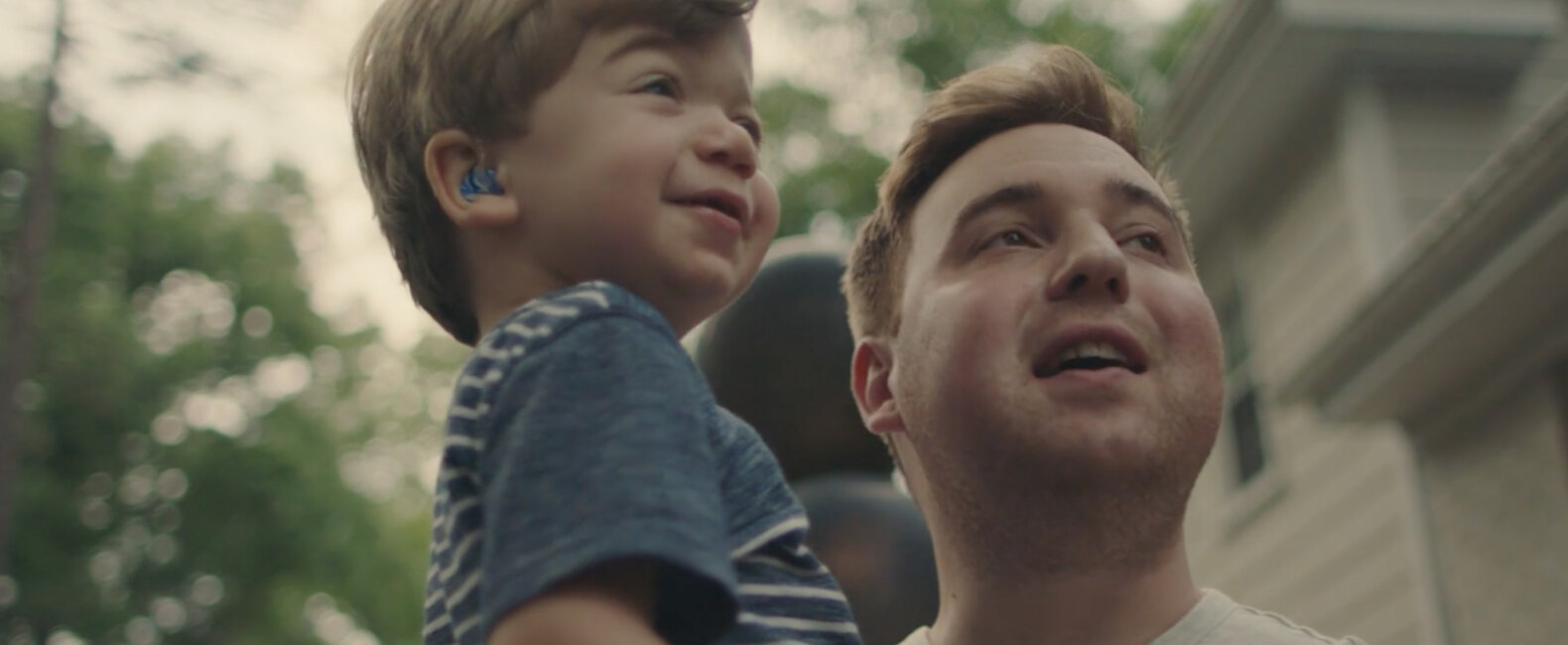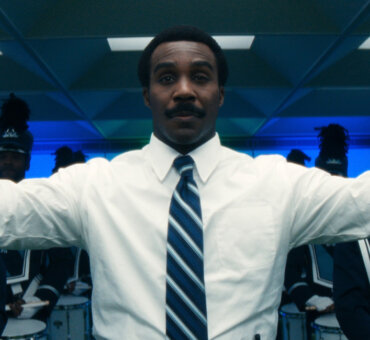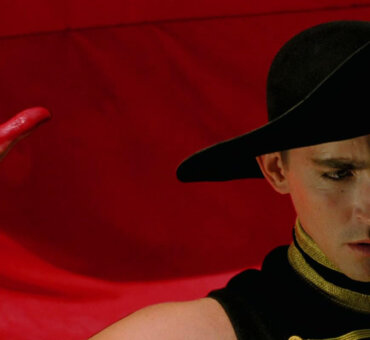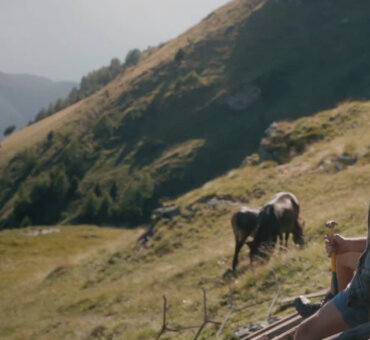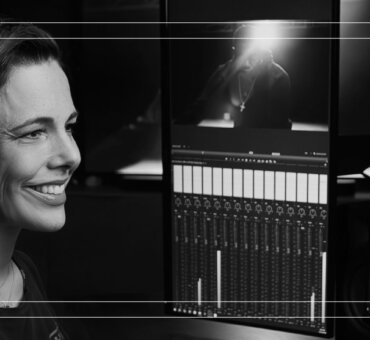The Project Alive series is difficult to watch, but that’s the entire point. Film has an incredible ability to immerse its viewer into an environment, no matter how difficult that environment may be. So, when Caravan’s founder, Jon Muedder, was struck with the reality that his son had been diagnosed with a terminal genetic disease called Hunter Syndrome, he knew the only way to create real change was to make connections on a visceral level. So that’s what he and his business partner Bernardo Marentes did, along with Caravan and a veritable dream team of professional filmmakers. Admittedly, though, the series served as a personal experiment for Jon, to see how other families were grappling with this tragic turn:
“I had this curiosity. There were days when I didn’t know if I was ever going to laugh again, you know? I wondered if life would ever feel normal again,” Jon told us. “I wanted to spend time with families who have walked through the ‘hard’ and who were still in it. I wanted to be with parents who were forced into watching their child slip away right in front of them.”
The series of films are as beautiful as they are heartbreaking, and as devastating as they are compelling. And most importantly, they’re working. To date, Project Alive has raised $1.75 million in funds for the potential cure since the films were launched. We spoke with Jon and Bernardo about their production, the power of the film community, and how close they are to removing the word “terminal” from a disease for good.
Filmsupply: How did you get involved with Project Alive?
Jon Muedder: During the fall of 2016, my son was diagnosed with Hunter Syndrome. It was a very long, drawn out, and heartbreaking process for my family — my wife and three kids. Caravan is a small team sharing one office, so Bernardo and all of the people we work with saw first-hand what it was like for us to walk through that process. If I’m completely honest, it wrecked me. We do a lot of commercial work, pushing brands. Things like that have value, but in the context of what I was going through, it was just very hard to work on advertising.
Bernardo Marentes: Like Jon said, we’re a very close-knit group that works here every single day, so, as cliché as it sounds, it does feel like a family of sorts. As Jon was suffering, we were collectively mourning in our own different ways as well.
Jon: My wife and I started getting more proactive about research and meeting with experts, and that’s when we found Project Alive. It’s a parent-led non-profit with no paid employees except one very part-time admin. These parents partnered with researchers 6 years ago who now believe they’ve found a cure for Hunter Syndrome. It is working as a cure in animal models, and the FDA has approved a clinical trial. However the missing piece is funding, because so few boys are affected that the pharmaceutical companies don’t see a return on investment.
At the same time, Eliot Rausch and I had a series of conversations. He heard about my son’s story, and he was going through a lot of unknowns with his boy Leo. We had a series of long conversations about life and parenting, parenting dreams getting crushed, and what it looks like to still have hope. Through those conversations, the seed was planted for a series of stories on families affected by Hunter Syndrome. I brought the idea to my team, reluctantly, because it was going to involve taking a significant step back from our clients and commercial work to focus on telling these stories. It was a big financial sacrifice, but the response from our team was so incredible that we decided to dream big and see what we could do.
What was going through your mind, Bernardo?
Bernardo: For me, personally, it was just the frustration of not knowing and not being in control. It’s this rare genetic disease, it’s terminal, and you just think, what are you going to do? At first, you think you’re just shit out of luck. When Jon came to us and very reluctantly threw it out there, he was very hesitant about asking for our help. But, we didn’t hesitate.
Jon: There was a part of me that was conflicted because it felt selfish. It’s for these families and for research, but it’s also for me because I’m dealing with this and it’s consuming my life. I wanted to do something proactive. And there was this curiosity. There were days when I didn’t know if I was ever going to laugh again, you know? I wondered if life would ever feel normal again. I wanted to spend time with families who have walked through the ‘hard’ and who were still in it. I wanted to be with parents who were forced into watching their child slip away right in front of them.
So, how did you decide to tackle these stories?
Jon: We talked about doing one story or a piece of long-form content, but, ultimately, we felt like the stories were so different that a series would be the strongest. From a timing standpoint, it was going to be too big for us to do by ourselves, so we made a wish-list of friends and collaborators we thought would be a good fit. Our first step was to develop of an in-depth treatment (you can download their treatment here). I’ve never been great at the elevator pitch or just selling stuff quickly. Every time I had a conversation I’d go into this deep context talking about my family and it really started to wear me out. So part of the process for the treatment was just getting all of that on paper to make it easier to connect with people. Do you want me to read a couple sentences?
That’d be great.
Cool. So it says:
When I first started Caravan in 2012, my goal was to tell beautiful, compelling stories. I never dreamed that one day, one of these stories would be my son’s. In September 2016, my two-year-old boy Finn was diagnosed with Hunter Syndrome, a rare terminal genetic condition with no cure. The only FDA approved treatment would keep Finn more comfortable while he slowly lost all his physical and cognitive abilities. The thought of losing this precious child triggered an intense period of grief. I slowly came to a decision. I could let the darkness take over or choose to love and enjoy my sweet and fun loving toddler that was in front of me.
I didn’t know what the response would be. We work in the commercial space and people get paid a lot for what they do, so I didn’t even know if people would be interested in doing it or not. That’s the real story in this thing, though. I was just overwhelmed with the amount of love and grace that I personally received through this process and just how generous people have been in investing their time and resources into this series. Dallas Taylor, Eliot Rausch, Gregory Reese, Jared Hogan, Christian Schultz, Dan Chestnut, Evan Vetter, Tony Anderson, Chad Lawson- it would take me a long time to finish this list…
Bernardo: Everybody gave so much. There’s way too many people to thank here, from first AC to color, to sound. All our friends wanted to be a part of this. To see this level of generosity was incredible. I’m just scraping by to do my part, and people we didn’t even ask were messaging us to say, “We saw that documentary and if you ever need anything, let us know.”
Do you think any community would respond like this?
Jon: I would like to think so, but I’m not sure. I think there’s a sense of identity and family within the film community. Maybe I’m speaking out of turn, but I feel like nobody gets into film because they want to get rich. We are passionate. We have a vision. And people want to do work that matters. I think people saw an opportunity to do something that really mattered and to tangibly move the needle for a group of kids.
Bernardo: There’s a lot to be said about using your skills in a very tangible way to clearly and quickly make a difference. It’s different if you’re just asking me to donate money vs asking me to use my talents to do what I love and have it mean something.
What was it like producing films that were so personal to you?
Jon: I want every project I touch to be successful, but the stakes were higher on this one. I was advocating for a rare part of society that I now found myself a part of. It’s one thing when you’re given a project and you immerse yourself into a hard story for the sake of executing your vision, it’s a different thing when you’re the one desperate to have the story told.
It was especially hard to immerse myself into the world of these other families who had children further along in the disease progression. It became my job to tell their story of watching their child die, all the while knowing it will be my story unless something drastic changes.
Bernardo: Adding on to that, we decided at the very beginning that this was not going to be a side project for us. It was not something we were going to do after hours or between projects. It was going to get the same attention, same process, and the treatment was going to be as polished as if we were pitching it to a big company. In a lot of ways, it was even bigger. This is was family at stake.
How do you not only create emotion, but get an audience to take action?
Jon: It seems like there are so many great causes out there these days. In some ways, I think it’s harder than ever to cut through the noise and have your voice heard. For me, this documentary series was about wanting to create something honest, raw and beautiful. I often say if people really knew these boys’ reality contrasted with just how close research was to a cure, they’d be compelled to act. In the last documentary, we showed the devastating realities of the disease in its end stages. It was the most gut-wrenching story to tell, but there’s something powerful about depicting reality and urging people to step in and save kids before its too late. And I think people are responding in big ways.
What is it about these stories that make them so powerful?
Bernardo: It creates a window into people’s lives from all walks of life and in different parts of the country. It allows people to connect with these kids and families in a way that’s not just a picture or statistics. You feel like you know these people.
Jon: Film is an immersive medium. You can look at an image, you can read something, but with film you’re hearing these parents; you’re seeing these kids. It’s one thing to read an article about a parent who takes their child to the hospital every week watching nurses put a needle in his chest. It’s another thing to be listening to that child’s scream and watching while their parent’s tears. It puts you in it, in a way that no other medium does.
My hope for these films is that people would continue to be moved to action. But that they would also look at life with a different lens and appreciate the things that are often taken for granted.
Where does Project Alive go from here?
We’re in a very exciting season and seeing tangible steps toward saving lives. In the last 12 months, Project Alive has raised $1.75 million of the total $2.5 million goal to fund the gene therapy clinical trial at Nationwide Children’s Hospital. Enough money was raised last year to initiate the production of the investigational new drug to be used in the trial, which will be ready this July. Once the remaining $750,000 is raised, the clinical trial can be begin.
We continue to do all we can to spread awareness and raise funds. Families across the country are joining together. The films are just a small piece of it. The money being raised has come from bake sales, lemonade stands, text-to-give campaigns, and social media matching campaigns. I’ve had kids in Charlotte come up to me and give me money from their piggy banks. It doesn’t get much more humbling than that. Even my own six-year-old daughter, when given money, she’ll say, “Daddy, I want to give this to Project Alive to help Finn.” As a dad, that puts things in perspective.
To watch all of the Project Alive stories and to donate to their cause, go to projectalive.org.
